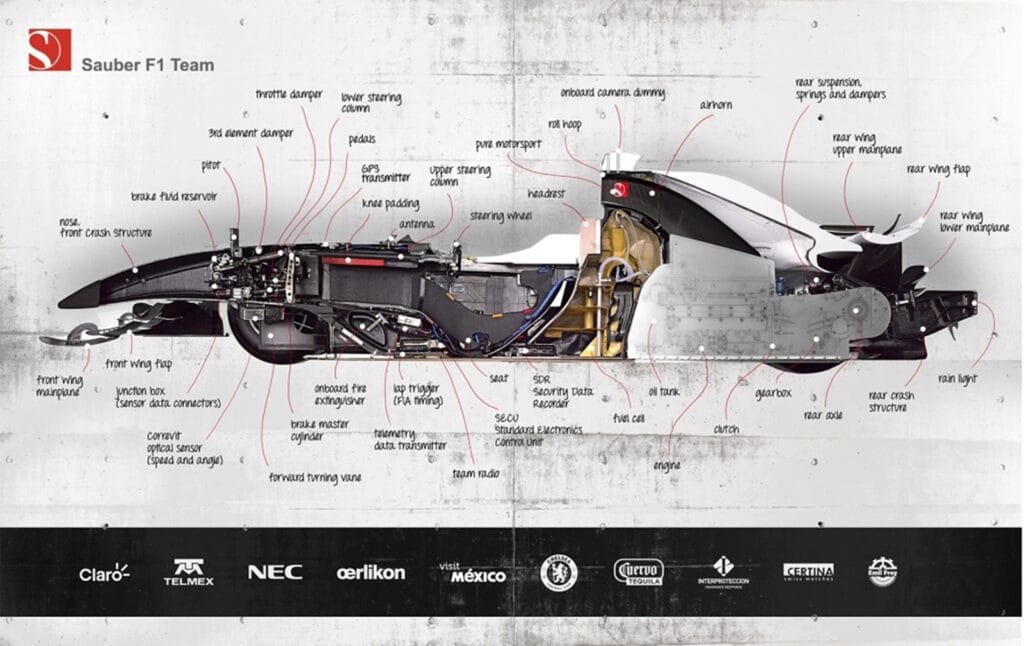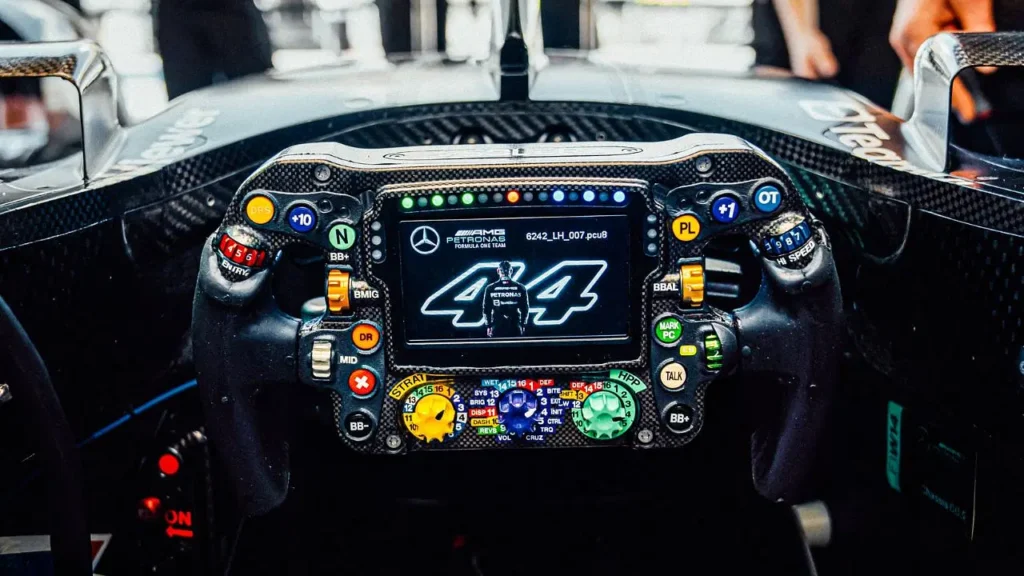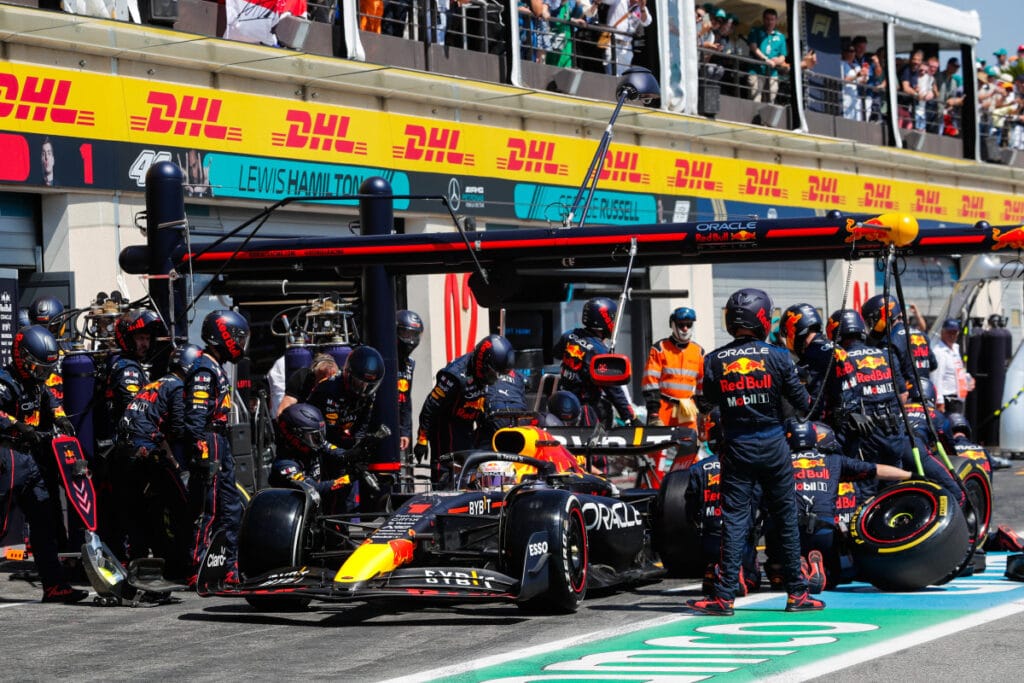
Engineering Excellence
An F1 car is one of the most advanced machines in the world—built for performance, safety, and speed. The chassis is made primarily from carbon fiber, giving it incredible strength while remaining light. Everything about the car is shaped by aerodynamics, from the front wing and floor to the rear diffuser, all designed to create downforce and grip.

Hybrid Power and Precision
Under the hood is a hybrid power unit: a turbocharged V6 engine combined with electric energy recovery systems. These systems collect energy from braking and exhaust heat, then reuse it for a power boost during acceleration. Inside the cockpit, the driver controls dozens of functions from the steering wheel—adjusting brake balance, engine modes, and energy deployment on the fly. Every car is also loaded with sensors, sending real-time data to engineers who monitor performance from both the pit wall and the team’s remote headquarters.

The Importance of Pit Stops
In Formula 1, every second matters—especially during pit stops. Teams must be lightning-fast when changing tires, often completing the entire process in under three seconds. A well-timed and well-executed pit stop can gain valuable track position or avoid traffic. Red Bull Racing holds the current world record for the fastest pit stop, changing all four tires in an incredible 1.82 seconds during the 2019 Brazilian Grand Prix. These moments show how F1 is not just about the driver—it’s a total team effort.